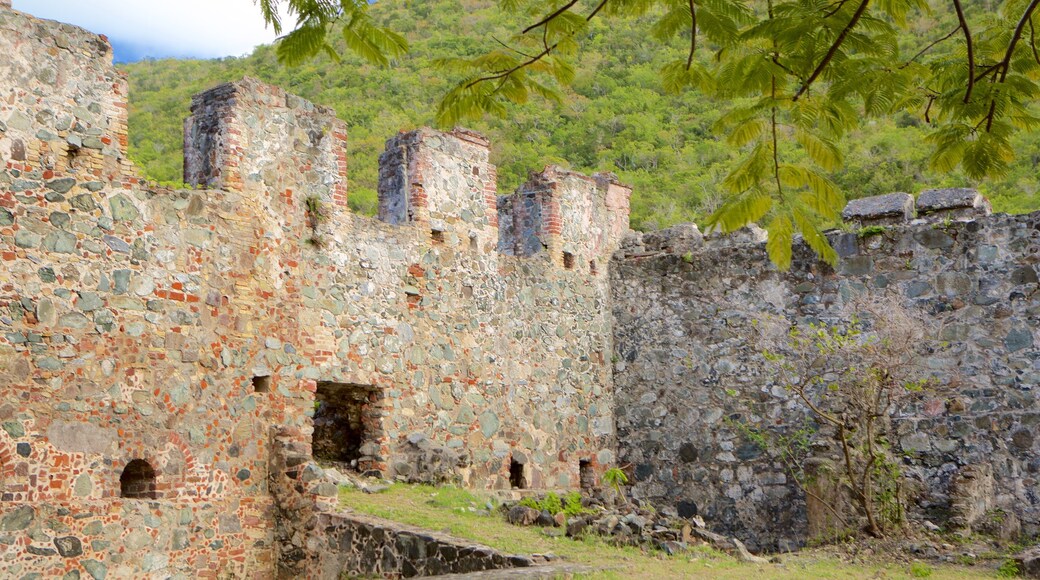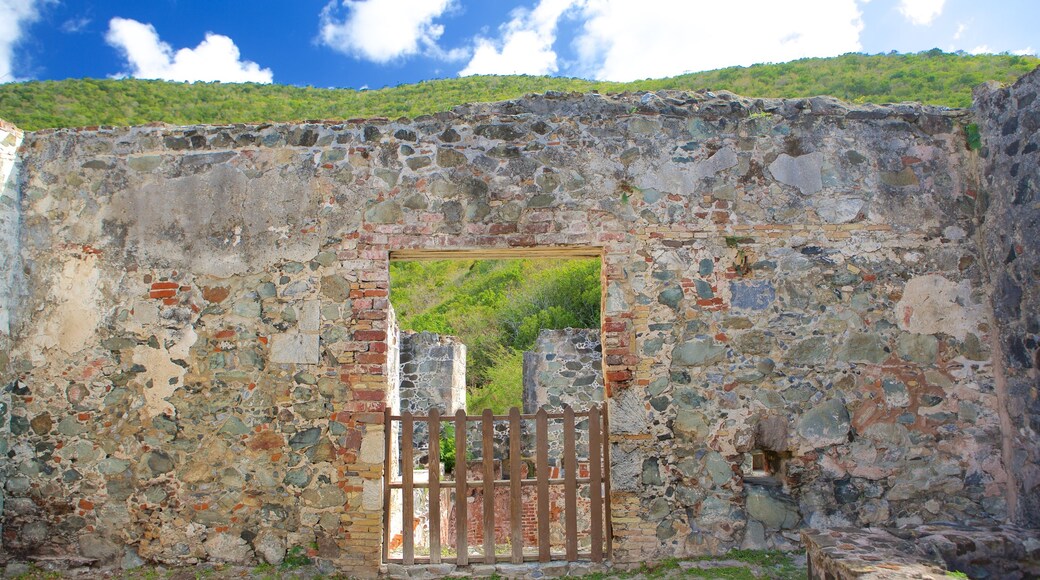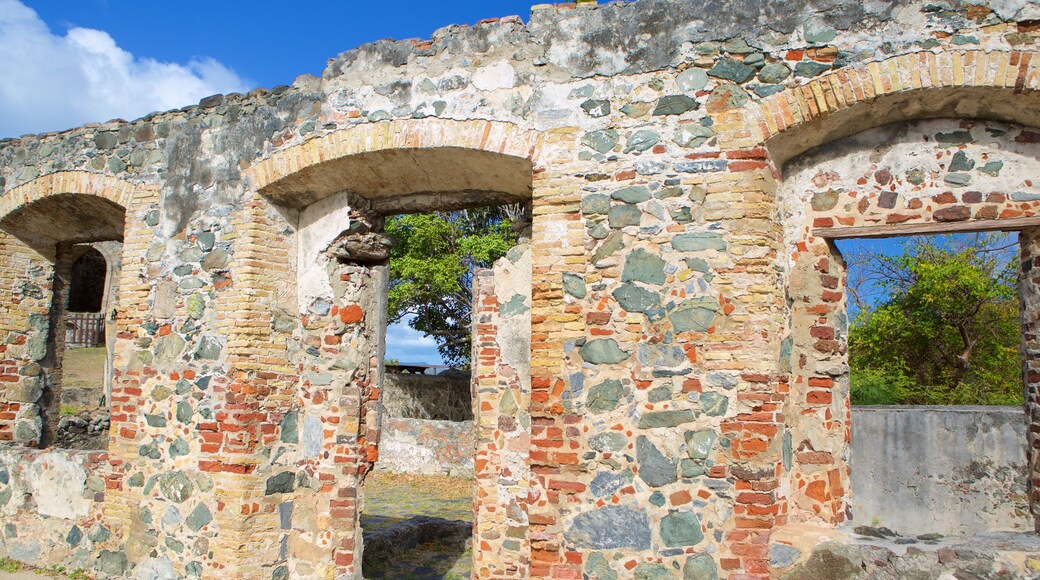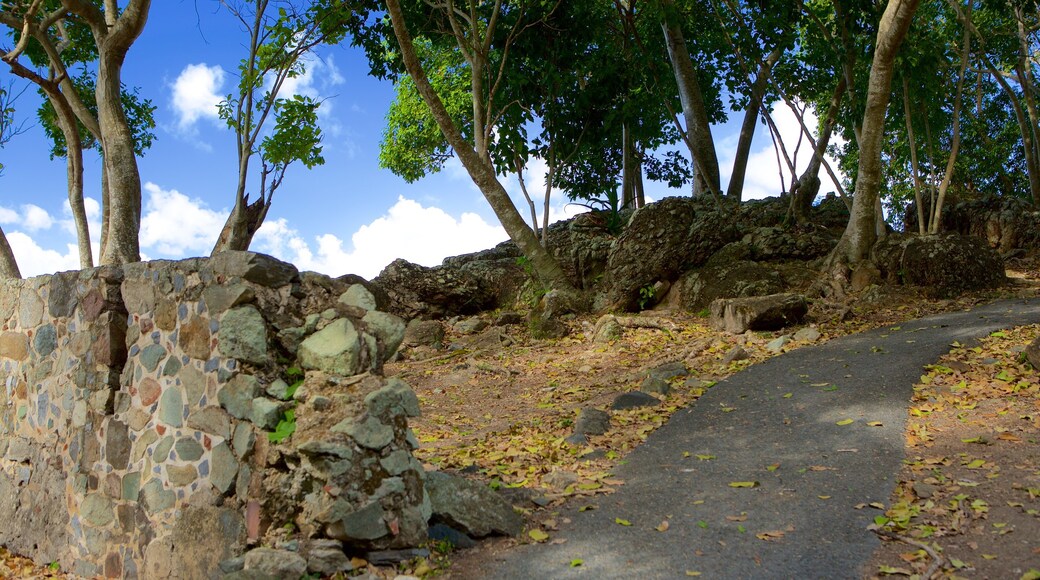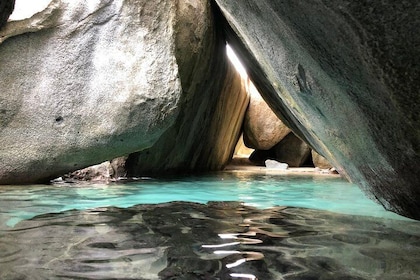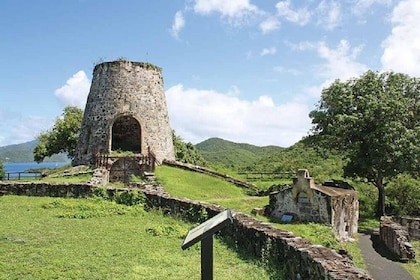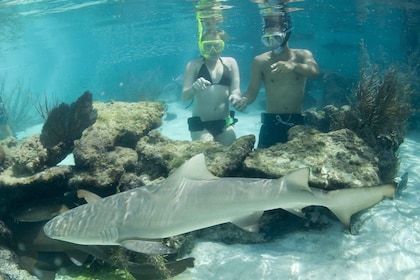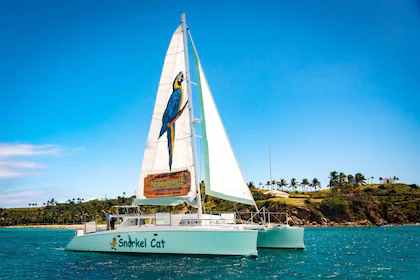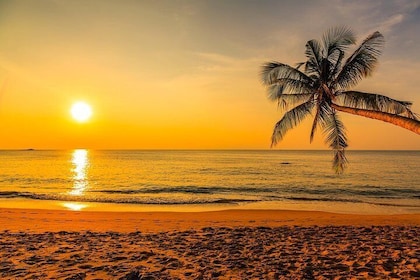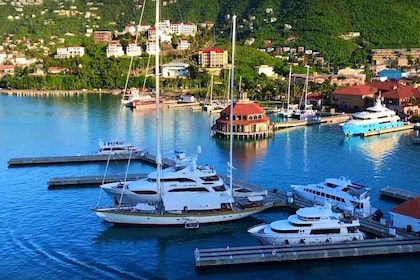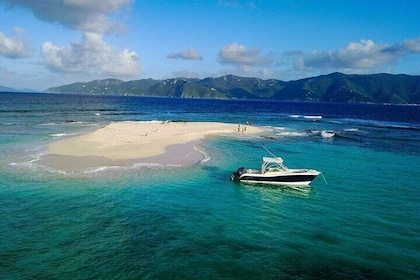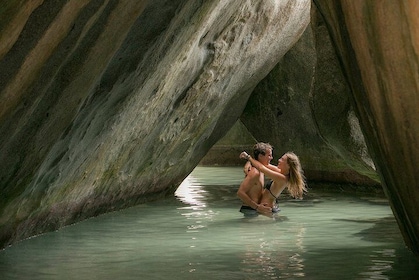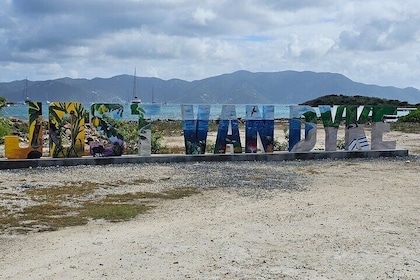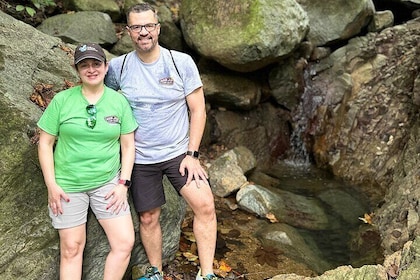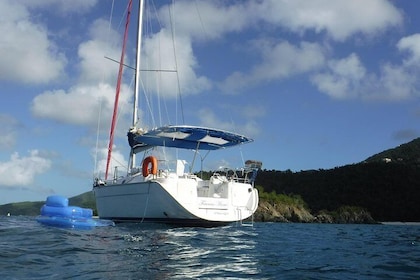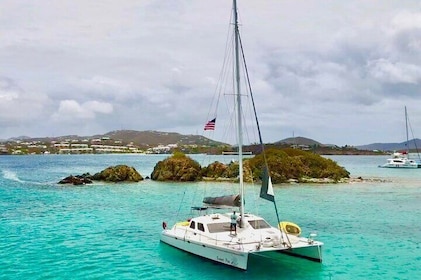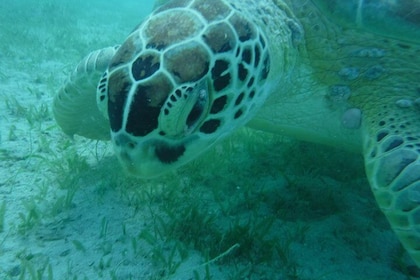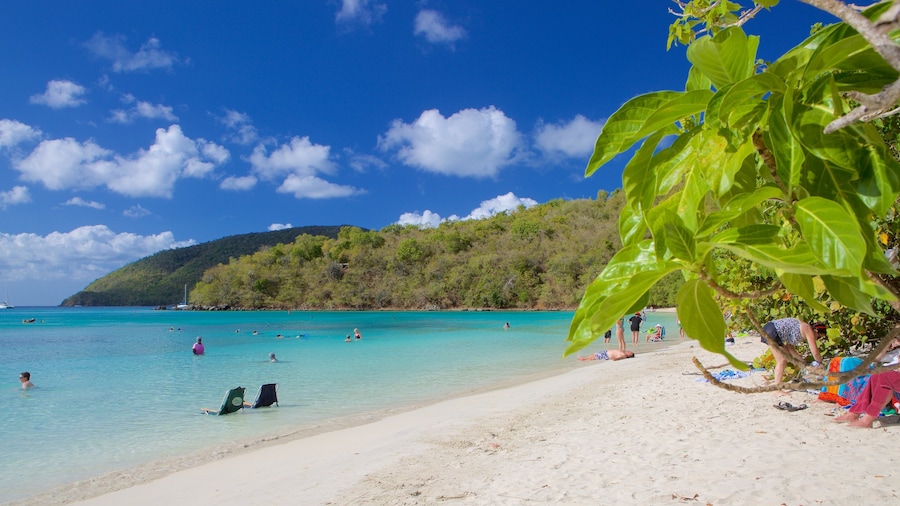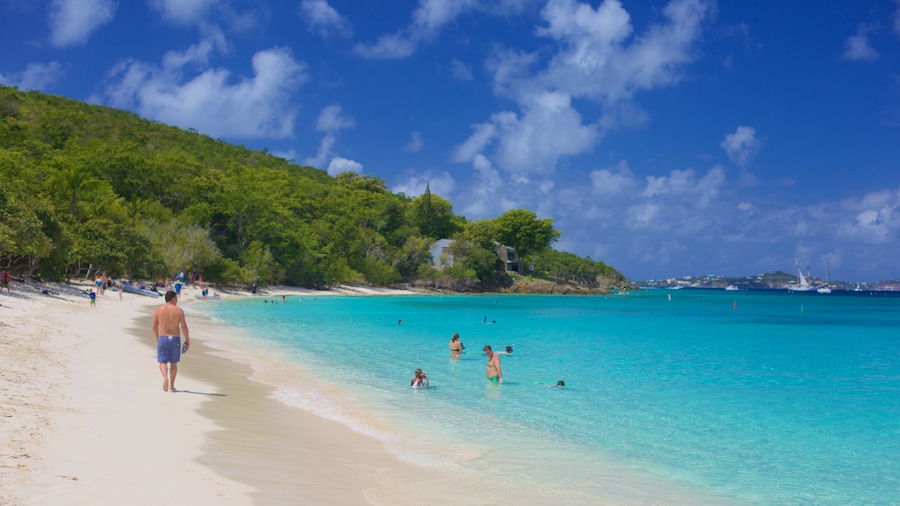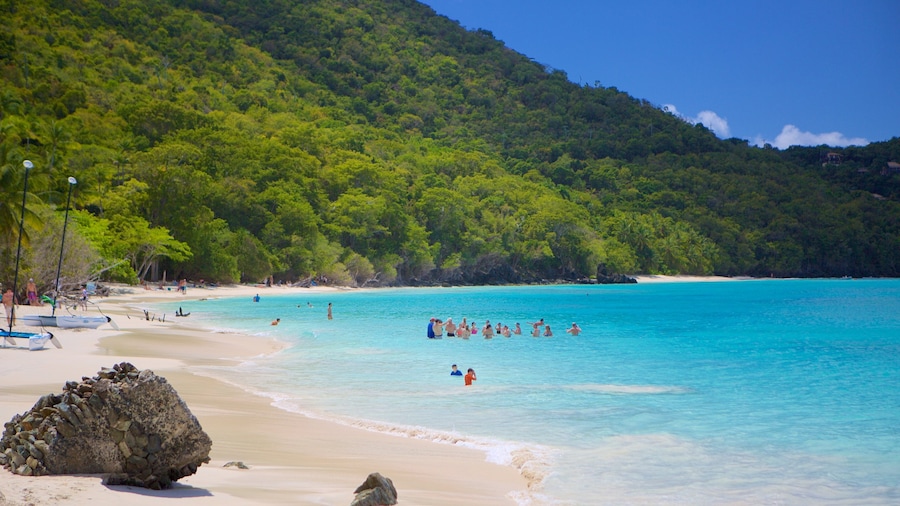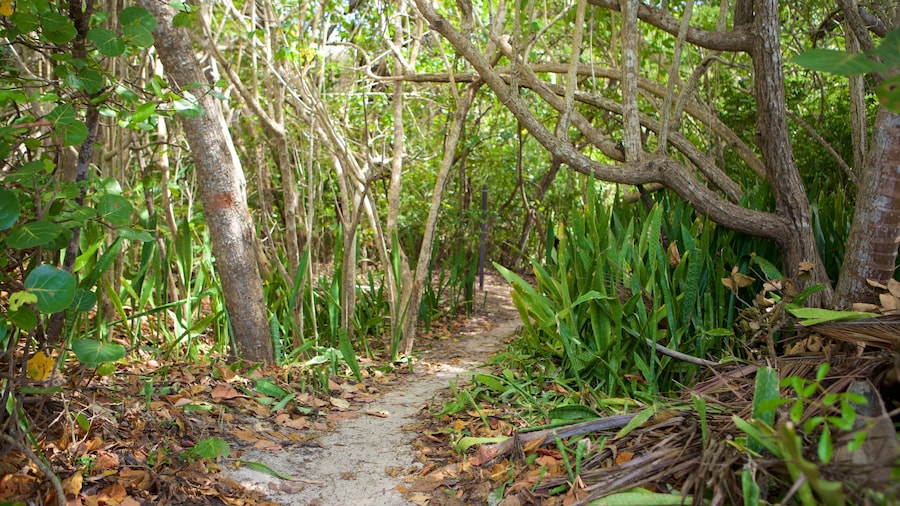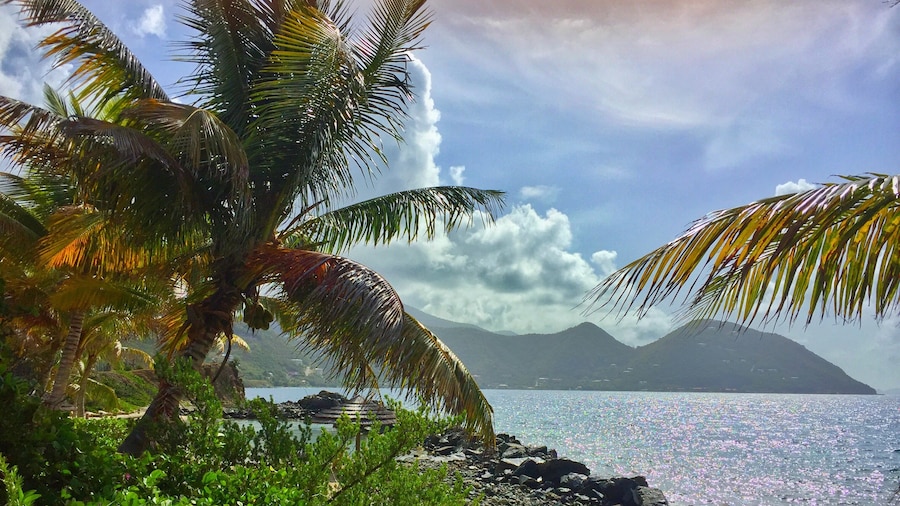In a stunning location above tropical Leinster Bay, these plantation ruins offer some of the last remaining reminders of the slave trade on the island.
View the remains of the mill and factory that were once used to harvest huge quantities of sugar cane at Annaberg Plantation. Wander along the self-guided trail and discover the story of the slaves who worked on this beautiful area of woodland.
Follow the walking trail around the ruins of the plantation. Once covering an area of 518 acres (210 hectares), the estate was later divided into several smaller farms following the abolition of slavery in the Virgin Islands.
Keep strolling until you reach the 38-foot (12-meter) high windmill, one of the first buildings on the trail. This mill was used to crush up to 100 cartloads of sugar cane per day, extracting the valuable juice. The size of this rounded stone construction gives an impression of the scale of the production that would have once taken place here.
Continue onward, pausing to read signs detailing the arduous existence of the laborers who were forced to work here. As well as long hours and dangerous conditions, workers here would have lived in huts made from branches that were held together with a mixture containing mud, lime, coral and sand. These simple constructions have since been destroyed, but look for markers indicating where they once stood.
Other buildings of note are the fire pit and factory, as well as the dungeon positioned on the southern side of the plantation. Slaves working here would have endured back-breaking physical labor and risked severe punishment for failing to comply with any instructions. Peak inside the dungeon to see graffiti as well as rust stains on the walls where shackles would have been attached.
Don’t leave without taking a stroll down the hill to Leinster Bay. Sit on the sand and gaze over miles of pine forest or enjoy a refreshing swim in the sparkling blue water.
Find Annaberg Plantation on the northeastern shore of the island, a 20-minute drive east of Cruz Bay. The estate is open daily and there is an admission fee.
